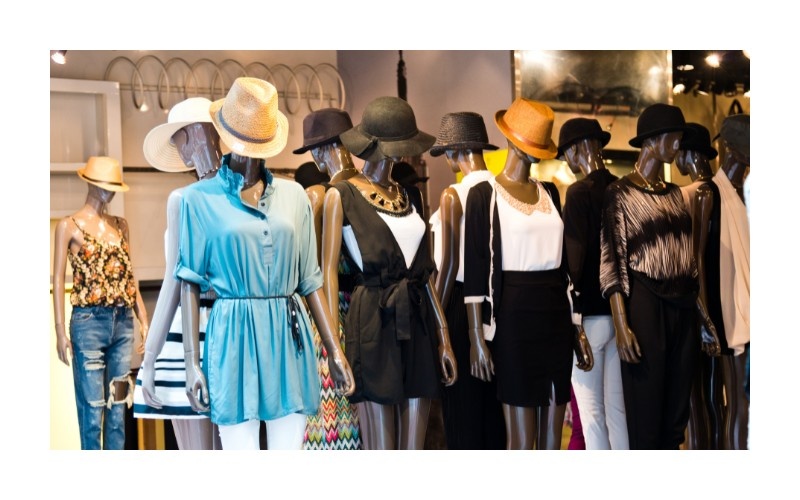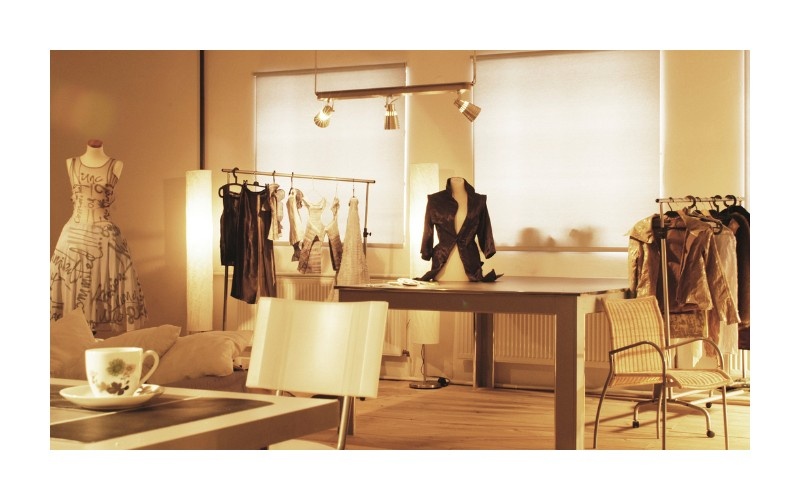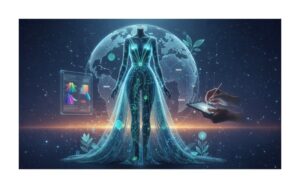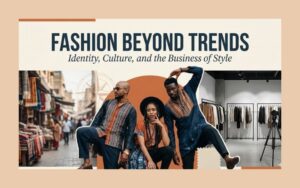As soon as humans started dressing up in animal hides, fashion took its birth—not in the glitzy, shimmering form that we know today in the world of couture, but in the basic urge of communicating protection, belongingness, and differentiation. During the 19th century, fashion started to get more closely involved with technology. The Industrial Revolution brought mass production and artificial dyes, and clothes were able to reach more people at different social levels. Magazines and later photographs began to shape the public imagination, making fashion a spectacle to admire, follow, and emulate. Each decade reflected its pulse through its hemlines and materials.
But fashion is more than trends; fashion is a reflection of society’s anxieties. Sustainability is one of the hallmark characteristics of fashion in the 21st century. Having spent decades of consumer culture, individuals are finally facing the reality of how fashion affects the environment and contributes significantly to wastage, pollution, and bad labour practices. Thrift, slow fashion, and upcycling are now revolutionising how younger generations think about wearing clothes.
Fashion also cannot be severed from identity politics. Billy Porter or Harry Styles‘ wearing of gowns on red carpets is not merely about shock; they represent freedom from strict boxes. Fashion is a war zone for self-expression, pushing back on societal expectations and expanding what is considered beautiful. Plus models, disabled models, and ethnic diversity models are gradually redefining the industry’s image of who can be fashionable. It was once an industry of exclusivity that is becoming one of inclusion gradually but imperfectly.
Aside from its socio-political effect, fashion is still a highly intimate expression. To most individuals, dressing up in the morning is a ritual of self-definition. Every piece of clothing bears meaning weighted by intention and memory.
Meanwhile, fashion is show business. Runways are no longer simple spectacles; they are performance art that combines music, stage design, and movement. But fashion is contradictory. It embraces uniqueness yet compels conformity in the form of trends. It pursues beauty and yet breeds insecurity. It stimulates creativity yet has been charged with exploitation. This contradiction is what renders fashion so endlessly complicated and endlessly captivating. It is both a dream and a mirror, an aspiration and a reflection. The struggle between these extremes drives its ongoing transformation.
Looking ahead, fashion is about to converge with technology even more. Virtual fashion, online clothing for avatars, and augmented reality fitting rooms are changing how we interact with style. Metaverse-style outfits are being sold as NFTs, and artificial intelligence is assisting in predicting trends and tailoring shopping experiences. Picture wearing a look that only exists in cyberspace but still carries worth and status in virtual worlds. To younger generations that reside as much in the virtual as in the real world, it is no longer science fiction but reality.
No matter how sophisticated it gets, fashion will always come back to one basic truth: it is a language. Fashion is never finished in one story because it reinvents itself the minute we believe we have circumscribed it. What keeps the topic so fascinating is that it refuses to be fixed. One minute it is tradition, steeped in cultural heritage, and the next it is experimental avant-garde, destroying each and every expectation that preceded. The further investigation into fashion comes in the areas of culture, psychology, world influences, and the very intimate connection between the body and the clothing.
To start with, let’s explore the cultural origins of fashion a little closer. Fashion, in this sense, is wordless diplomacy, sewing disparate pieces of the human experience together into wearable works of art.
In addition to culture, fashion also explores the psychographics of self. Clothing is an extension of personality, a means of self-construction. A sharp white blouse may concentrate energy, while loose home clothes may encourage relaxation. Fashion is thus intimately connected with how a person perceives him or herself, with their mood, and even with ambition.
Fashion also offers protection figuratively. It becomes armor from judgment, insecurity, or even vulnerability. A striking dress may empower an ignored person, while a hoodie may provide reassurance to a person who needs to be invisible. By making these subtle decisions, individuals move through social fields, creating invisible shields and cues. Clothing is also freedom—when a person leaves the rules of society behind and puts on what feels authentic to their soul, they take their story back.
How fashion interfaces with the body is yet another deep level. In the last few decades, though, pushback has increased. Body positivity campaigns call for inclusivity and degrading the dictatorship of single beauty standards. Fashion now is gradually adopting size, shape, and ability diversity. Adaptive wear for individuals with disabilities, maternity fashion, and plus-size model celebratory collections are indicators of a new, inclusive path. Fashion only reclaims its genuine power—less to dictate and more to celebrate human diversity when it celebrates all bodies.

The commercial aspect of fashion cannot be overlooked, as it is just as much a part of the narrative as creativity is. The fashion world is among the world’s biggest employers, with supply lines spanning continents. Designers, textile laborers, models, photographers, editors, marketers, and many others are all part of the massive machinery of fashion. But this machinery comes with troubles: exploitation of labor, damage to the planet, and overuse. Fast fashion, in particular, has turned the industry into a culture of constant production, where trends are changing each week and clothes are discarded as fast as they are purchased. While this has brought fashion to millions, it has also created mountains of waste, chemical pollution, and exploitation of workers in underpaid factories. The shiny glamour of fashion keeps numerous secrets, reminding us that there is a price for beauty.
It is because of this that the shift towards green fashion has become imperative. New designers play with fabrics grown from algae, mushrooms, or even used plastic water bottles. Fashion houses try out rental systems where one can rent clothes for an event instead of buying them.
The Intimacy of Personal Style
Beyond politics and culture exists the extremely close relationship between fashion and self. While trends tend to fill the chit-chat, personal style imbues fashion with meaning.
For others, personal style is a matter of comfort, of selecting fabrics and silhouettes that are as familiar as a second skin. For others, it is a kind of daily performance, an aesthetic choice as to how to show up to the world. One might live for bold colors that scream to be noticed, while another craves muted minimalism that suggests refinement in a whisper. Dressing becomes a ritual of self-craft, a formulation of confidence and mood before the day even breaks.
Fashion and Identity in the 21st Century
Maybe the biggest characteristic of contemporary fashion is inclusivity. For many years, the business maintained exclusive standards of beauty that left most individuals behind. Nowadays, representation is at the forefront. Models of varying sizes, ethnicities, genders, and disabilities walk runways. Fashion campaigns more and more foreground diversity, rendering the business a better mirror of the world as it truly is.
Gender fluidity has emerged as a potent theme too. Designers now challenge the conventional lines of “men’s wear” and “women’s wear,” rather than forging collections that can be worn by anybody irrespective of identity. Those icons who break the gender mold—whether performing on stage, performing on screen, or strolling down the red carpet—are breaking rules and encouraging new generations to dress as freedom, not restraint.
This diversity is transforming not only fashion events but also popular culture. Street style, high fashion, and streetwear all coexist now in ways that cross the old boundaries. The very definition of fashion is broadening, not only to include luxury gowns but also sneakers, hoodies, and thrift store purchases as equally valid expressions.
Fashion can’t be divorced from technology either. Over the past decade, technological advancements have transformed everything from production to marketing. 3D printing enables designers to create clothes that never existed before. Artificial intelligence reads data and forecasts future trends, keeping the brands one step ahead of demand. Virtual reality lets customers try on clothes without entering a store, while augmented reality mirrors allow people to glimpse clothes without putting them on. Whole fashion shows have been held virtually, with avatars strutting virtual catwalks. The metaverse and digital fashion items foreshadow a time when clothing could exist fully in virtual worlds, being worn by online personas instead of bodily forms. Ridiculous though it seems, digital fashion is already making actual money, with consumers ready to pay for clothes they can’t actually touch. The distinction between clothing as a material need and clothing as digital art is becoming less clear.
As technology drives fashion ahead, the foundation of the industry is human imagination. McQueen made runways into stunningly eerie productions that bridged fashion and theater, and philosophy. All of these individuals illustrate that fashion is not merely about material but about vision, bravery, and capacity to stimulate thought.
Street style, in the same way, has become an undeniable reality. What was once the ingenuity of subcultures—skaters, punks, hip-hop groups—has now impacted the top echelons of luxury fashion. Photographers during fashion weeks today find more inspiration in the attendees around the event than on the runway itself.
Conclusion
Fashion’s styles might shift, but its underlying nature is timeless: the expression of identity through beauty, imagination, and significance. Fashion in its simplest form is storytelling. Each outfit is a sentence, each collection a chapter, each cultural revolution a new volume on the book of man. It is anything but frivolous and superficial, critics claim, but an intense reflection of what we are. What we wear will eventually wear out, but the messages we pass on resonate through the ages. Fashion is a soft whisper of power and frailty, of revolt and conformity, of beauty and agony. And with each stitch, it makes us remember that we are not just clothing our bodies but penning our tales.













